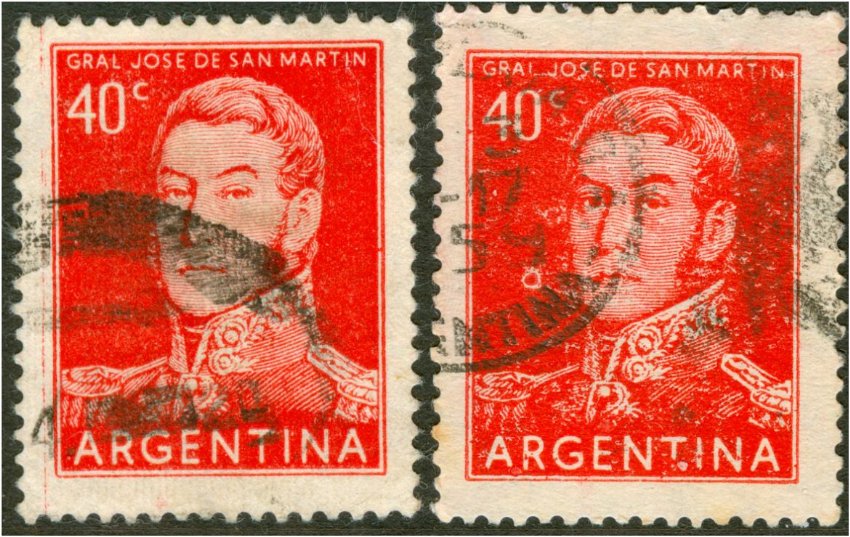and this suggestion and advice I would have expected from Pettigiani!
Since 1935 only 2 stamps in typogrphy had been printed both on the reel-fed Goebel and on a sheet-fed / flat-bed typography press:
the 10c Rivadavia in red in type II and the 40c José de San Martin.
The main difference - to be measured - is the height of the stamp provided there are NO correction teeth! The reel-fed stamps have a height of 30.0mm, the sheet-fed stamps have a height of 30.5mm:

The right hand stamp also has a watermark turned 90 degrees:
http://foro.filateliaargentina.com.ar/viewtopic.php?f=2&t=2124
I was hoping to find some reference to the manufacturer of the perforation machines. Pettigiani mentions the name Hogenfonet which does not sound like anything... Searching the World Wide Web did not give any results...
Famous manufacturers were Grover and Bickel. Both have been merger into WISTA now....